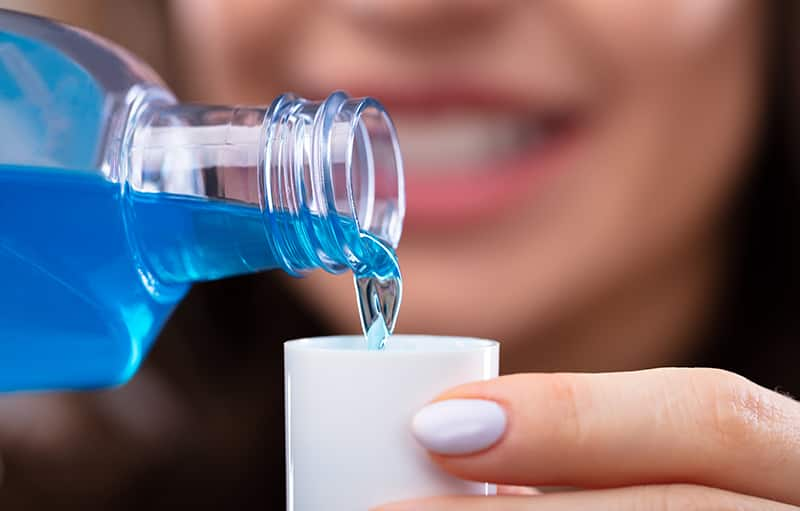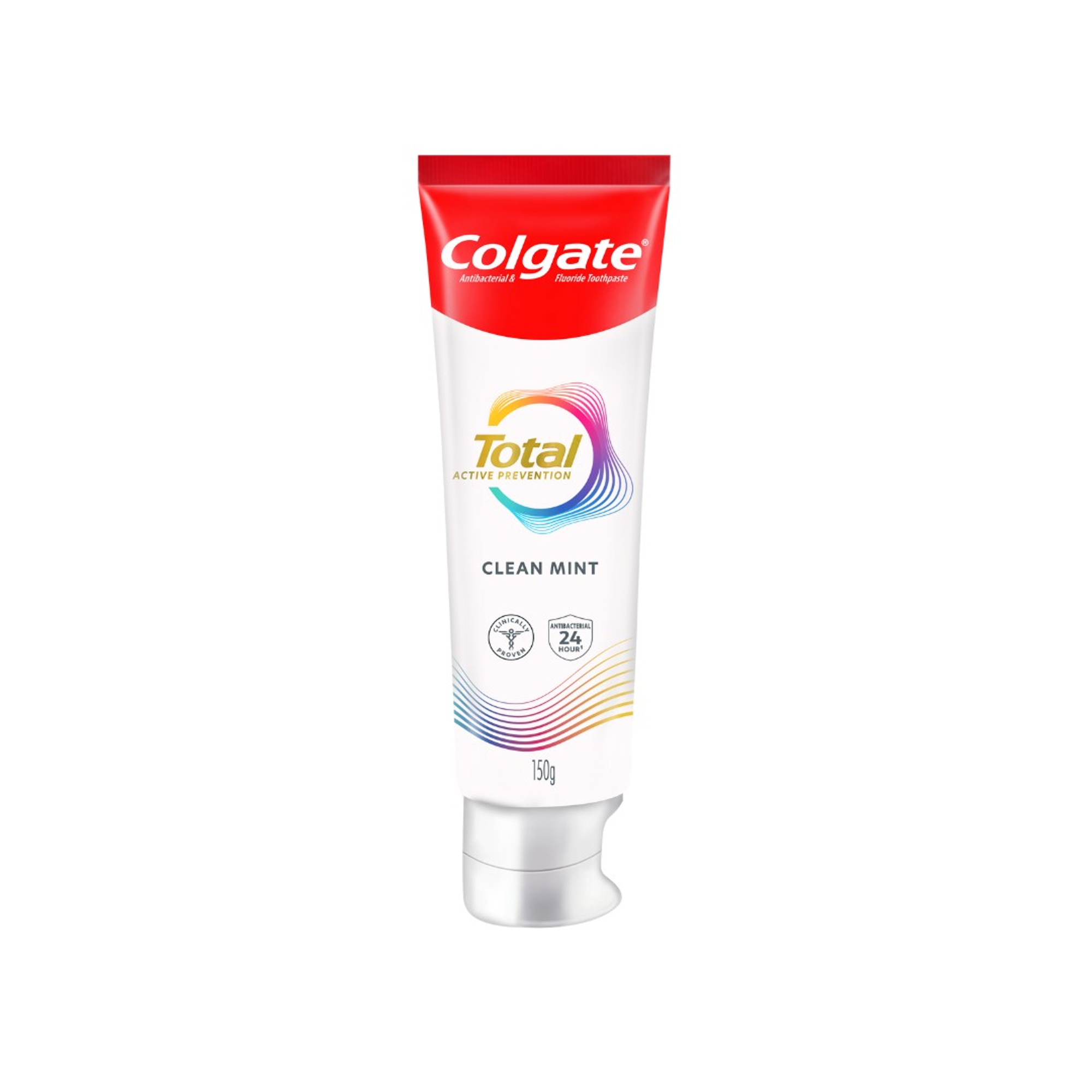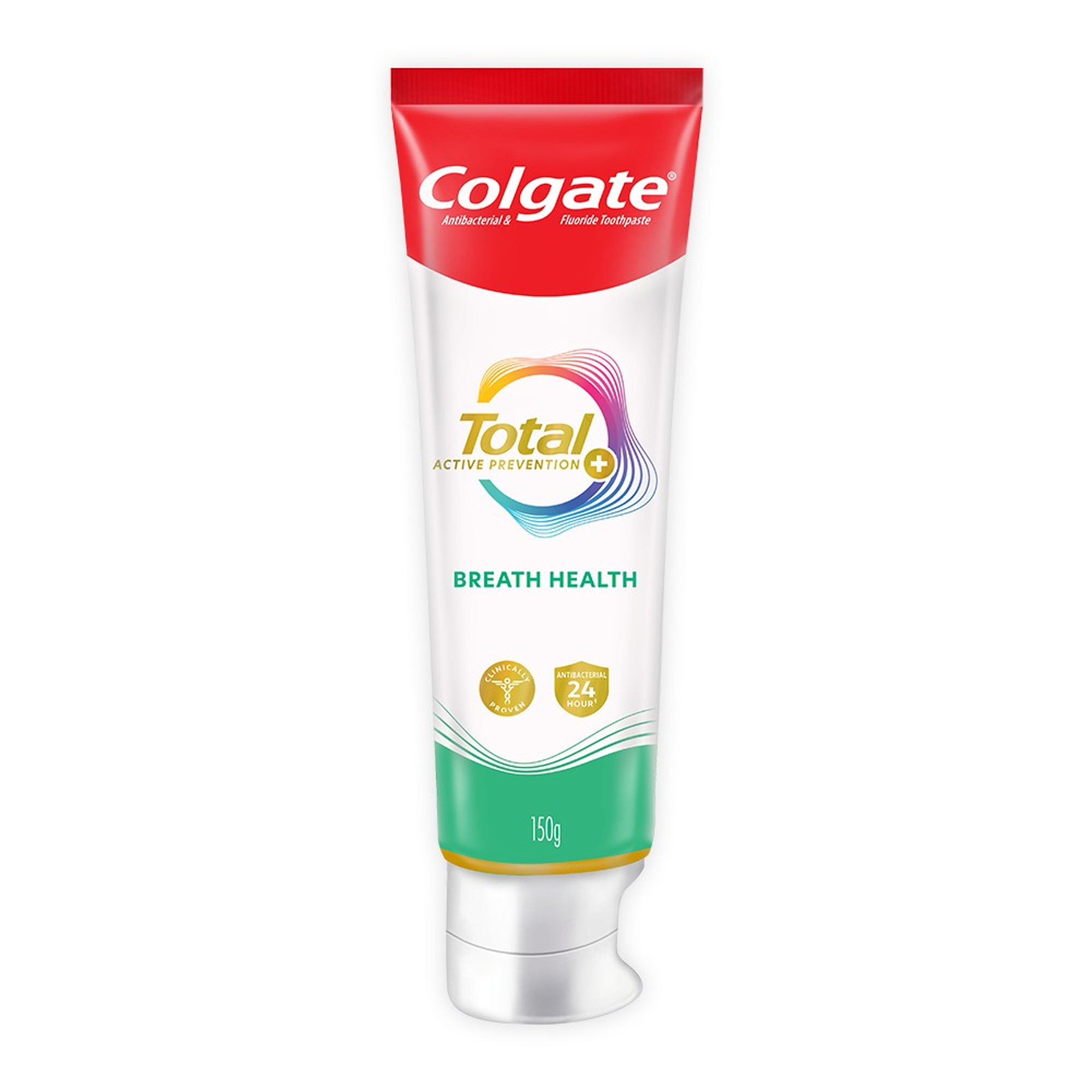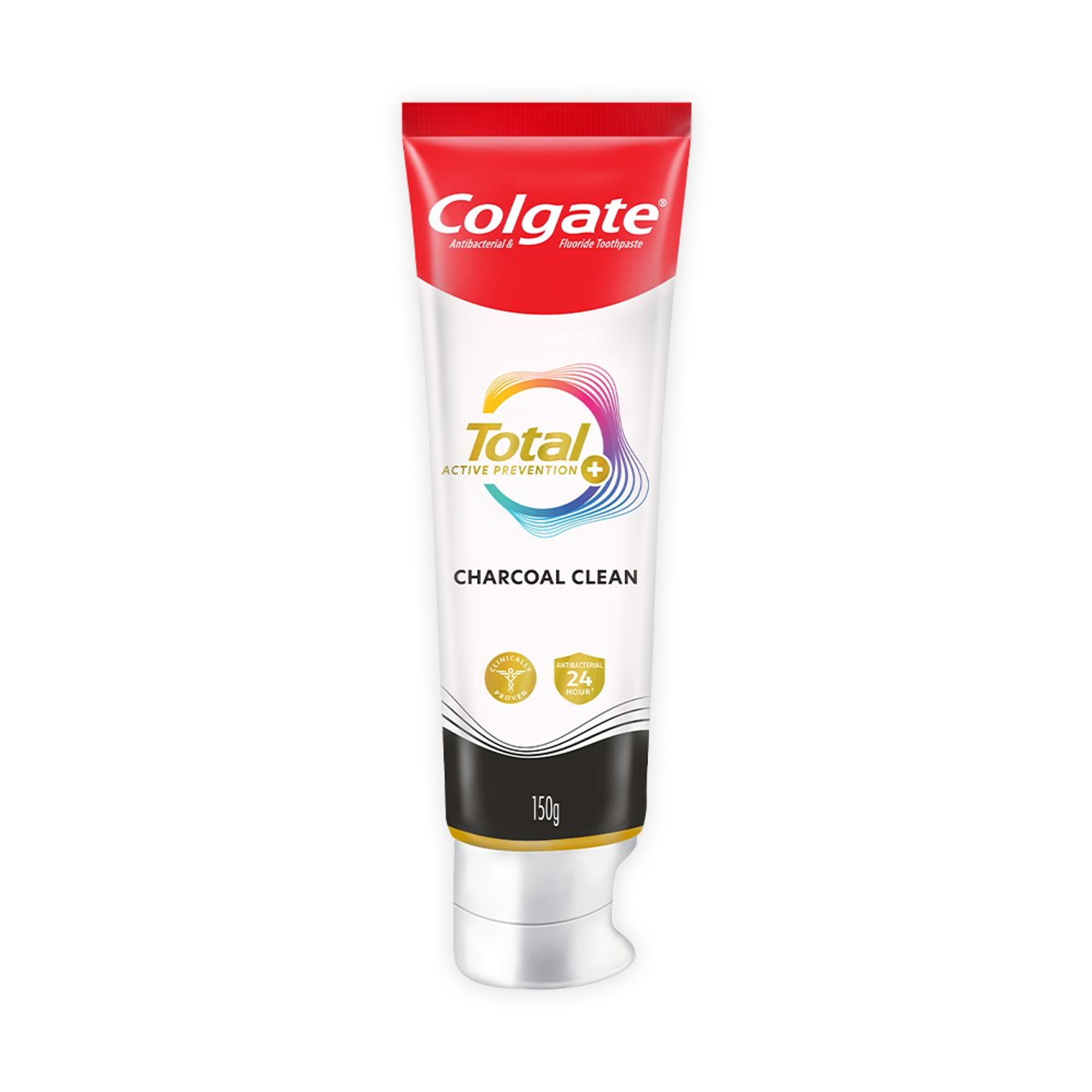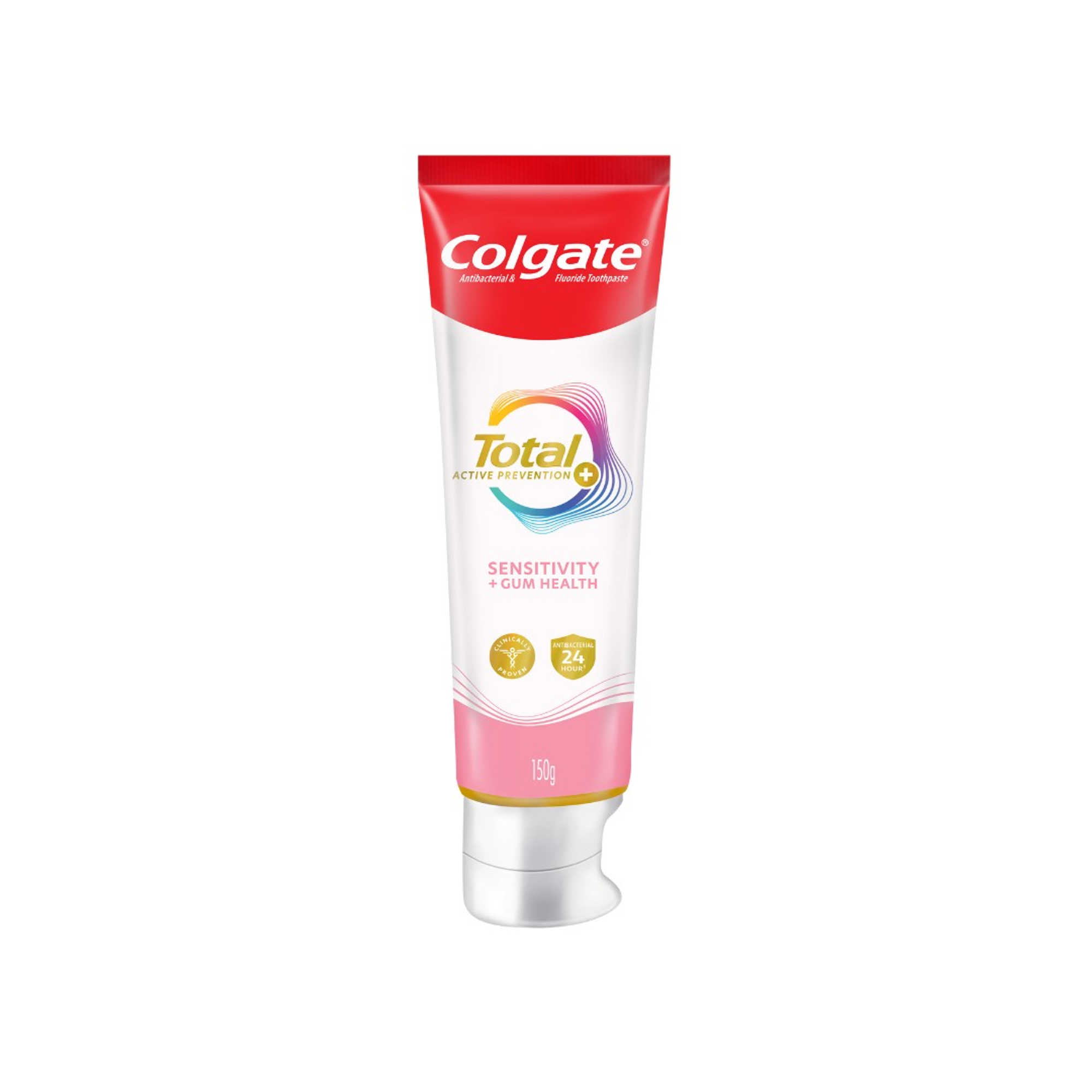Benefits of Mouthwash
Mouthwash is best known for freshening breath, but adding it to daily oral care can provide many other benefits. The American Dental Association (ADA) explains that mouthwash can reach areas that a toothbrush can't, which can help reduce the risk of developing cavities and gum disease.
It is important to note that untreated gum disease can lead to complications such as gum recession and tooth loss, but mouthwash can help boost your prevention efforts (American Academy of Periodontology). Mouthwash achieves oral health benefits by helping control plaque, a thin, bacterial film that builds up on teeth. When plaque is not removed, it hardens into tartar. The ADA reports that mouthwash can also slow down the formation of tartar.
Types of Mouthwash
There are two main types of mouthwash:
Therapeutic mouthwashes are mouthwashes with unique ingredients that kill bacteria and help with plaque build-up, gingivitis, cavities, and bad breath. Some also have fluoride, which can prevent or reduce tooth decay.
Cosmetic mouthwashes are mouthwashes that temporarily improve the breath and leave a good taste in the mouth. However, they do not lower the chances of cavities or gum problems.
Some therapeutic mouthwashes need a prescription, but you can get others over-the-counter. Ask your dentist if you need mouthwash and which type is best for your teeth. When picking an over-the-counter mouthwash, look for the ADA Seal of Acceptance. It shows that the mouthwash has been tested and proven safe and effective.
How to Use Mouthwash
Besides brushing and flossing daily, using an antibacterial mouthwash can be good for teeth. Mouthwash reaches places that toothbrush and floss might miss. They can help remove harmful bacteria, prevent plaque from building up and reduce gum problems if used correctly. The ADA advises on how to properly use mouthwash for the best results. Doing these things well can make sure mouthwash helps the teeth stay healthy.
Choose an ADA-approved mouthwash. This ensures that the mouthwash has been tested and proven safe and effective.
Store mouthwash at room temperature and away from direct sunlight. Discard after the expiry date for maximum effectiveness.
Swish the mouthwash around the entire mouth for 30 seconds. Be sure to swish the mouthwash between the teeth and over the tongue.
Spit out the mouthwash thoroughly after swishing, and do not rinse with water afterwards. This allows the active ingredients to stay on your teeth longer.
When to Use Mouthwash: Before or After Brushing
When adding mouthwash to your oral care routine for the first time, you might ask yourself when to use mouthwash. This is a good question, and there is no simple answer. The scientific research is limited, and reputable organizations offer different recommendations.
The Mayo Clinic recommends using mouthwash after brushing and flossing the teeth to ensure maximum effectiveness in reaching all areas of the mouth. According to the organization, brushing at least twice a day with fluoride toothpaste and a soft-bristled toothbrush is essential for removing plaque and preventing cavities. While mouthwash enhances oral hygiene, it should be viewed as a complement to, not a replacement for, regular brushing and flossing routines.
However, the National Health Service (NHS) recommends avoiding mouthwash right after brushing, as it may wash away the fluoride from the toothpaste. Instead, the NHS suggests incorporating mouthwash at a different time of day to maximize its benefits without compromising the fluoride protection provided by toothpaste. This advice aligns with a comprehensive approach to oral care, emphasizing the importance of combining various dental hygiene practices for optimal results.
The ADA states that you may use mouthwash before or after brushing based on personal preference. Always check the label on the product to ensure that you maximize its effects.
Precautions and Side Effects
Awareness of proper precautions and potential side effects can help ensure safe and effective use of mouthwash. Always consult a dental professional with any concerns or adverse reactions due to overuse. Here are some precautions and potential side effects to be aware of when using mouthwash:
Precautions
Not recommended for children under 6 years old due to the risk of swallowing.
Check for the ADA Seal of Acceptance when choosing a therapeutic mouthwash. This helps identify safe and effective products.
Read labels carefully and follow directions for use, ensuring that you do not exceed the recommended amount or frequency.
Store mouthwash, tightly sealed, and out of reach of young children to prevent accidental ingestion.
Potential Side Effects
Look for signs of gum irritation or changes in sensation after using a new mouthwash. Discontinue use if any discomfort occurs.
Oral irritation - stinging, burning, numbness, or taste changes after use. Stop use if these persist.
Nausea, vomiting, and diarrhoea if accidentally swallowed, especially by children. Seek emergency medical attention if a concerning amount is ingested.
Allergic reactions in those with sensitivities to ingredients like flavouring agents or preservatives. Discontinue use if any swelling, rash, or difficulty breathing occurs.
Dry mouth or increased tooth decay risk if overused or alcohol-containing formulas are used long-term.
How to Boost Your Oral Care Routine
Mouthwash can enhance the oral care routine, but remember that it is not a substitute for regular brushing and flossing. Brush your teeth twice daily for at least two minutes to remove food particles and plaque from the teeth. Additionally, floss once a day to clean between the teeth and along the gumline.
If you want to make further improvements to your daily oral care routine, consider these tips from the Mayo Clinic and the ADA:
Eat a well-balanced, tooth-healthy diet.
Limit high-sugar foods and drinks, such as candies and sodas.
Avoid frequent snacking.
Drink fluoridated water.
Change your toothbrush every three to four months or sooner if it looks worn or frayed.
See your dental professional for regular checkups.
While it's not a replacement for brushing and flossing, mouthwash can play an important role in your oral hygiene routine. It can help to freshen your breath, remove plaque and reduce your risk of cavities and gum disease. For help deciding whether to use mouthwash before or after brushing, talk to your dentist.





